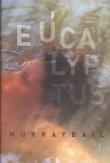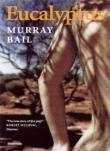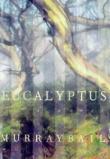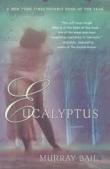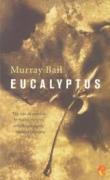AustLit
Latest Issues
AbstractHistoryArchive Description
Holland lived with his only daughter, Ellen, by a khaki river four hours west of Sydney. In spite of their remote location, tales of Ellen's beauty had traveled long distances and in the process inscribed a small legend. But Ellen's desirability was Holland's blindspot and finally he decided that the man who correctly named every eucalypt on his property would win the hand of his daughter. (Source: Trove)
Adaptations
-
Eucalyptus
Jonathan Mills
(composer),
2024
single work
musical theatre
opera
'In this dappled landscape lurks both beauty and wonder. The score is mysterious and colourful, with moments of dramatic intensity and hushed beauty. The libretto by Meredith Oakes is poetic and spare.
'Eucalyptus is an ageless story of love and longing, about a daughter and a father – Ellen and Holland. Ellen’s overprotective father has created a safe haven from the world – a forest of eucalypts. But is the forest a sanctuary? Or is Ellen, like Rapunzel, imprisoned? Ellen encounters a Stranger amongst her father’s trees – a storyteller with enchanting tales of far-away lands…'
Source: Victorian Opera.
Publication Details of Only Known VersionEarliest 2 Known Versions of
Other Formats
- Sound recording.
Works about this Work
-
Strategic, Stylistic and Notional Intertextuality : Fairy Tales in Contemporary Australian Fiction
2018
single work
criticism
— Appears in: TEXT Special Issue Website Series , no. 43 2018;'While Canadian scholar Lisa M Fiander argues that fairy tales are ‘everywhere’ in Australian fiction, this paper questions that assertion. It considers what it means for a fairy tale to be ‘in’ a work of contemporary fiction, and posits a classificatory system based on the vocabulary of contemporary music scholarship where a distinction is made between intertextuality that is stylistic and that which is strategic. Stylistic intertextuality is the adoption of features of a style or genre without reference to specific examples, while strategic intertexuality references specific prior works.
'Two distinct approaches to strategic fairy-tale revision have emerged in Australian writing in recent decades. One approach, exemplified in works by writers including Kate Forsyth, Margo Lanagan and Juliet Marillier, leans towards the retelling of European fairy tales. Examples include Forsyth’s The Beast’s garden (‘Beauty and the Beast’), Lanagan’s Tender morsels (‘Snow White and Rose Red’) and Marillier’s short story ‘By bone-light’ (‘Vasilisa the Beautiful’). The other, more fractured, approach is exemplified in works by writers including Carmel Bird and Murray Bail, which do not retell fairy tales but instead echo them and allude to them.
'This paper proposes that recent Australian works that retell fairy tales are less likely to be set in a recognisably Australian context than are works which take a more fractured approach to fairy tale. It also explores the notion that, presently, transporting European fairy tales, whole, into an Australian setting, seems to be a troubling proposition for writers in a post-colonial settler society that is highly sensitised to, but still largely in denial about, its colonial past.' (Publication abstract)
-
Introduction : The State of Play in Australian Fairy Tale: Where to Now?
2018
single work
essay
— Appears in: TEXT Special Issue Website Series , no. 43 2018;'At the turn of the last century, writers like Atha Westbury and Hume Cook were asking whether Australia had its own fairies, its own fairy tale lore. They attempted to fill the perceived lack of traditional fairy-tale narratives with their own published works of fairy tale. The titles authors chose for their collections – for instance, Olga Ernst’s Fairy tales from the land of the wattle and Annette Kellermann’s Fairy tales of the south seas and other stories – often revealed an overt wish to build a fairy-tale tradition that was distinctly and uniquely Australian. While some of these tales simply relocated existing European tales to the Australian context, most used classic fairy-tale tropes and themes to create new adventures. Other writers and collectors, like K Langloh-Parker, Sister Agnes and Andrew Lang, sought to present Indigenous tales as examples of local folk and fairy tales – a project of flawed good intentions grounded in colonial appropriation. These early Australian publications are largely forgotten and, in many ways, the erasure or forgetting of narratives that were often infused with colonial attitudes to gender, class, race, is far from regrettable. And yet there was a burgeoning local tradition of magical storytelling spearheaded by the delicate fairies of Ida Rentoul Outhwaite’s brush and the gumnut babies of May Gibbs that celebrated the Australian environment, its flora and fauna, populating and decorating new tales for the nation’s children.' (Introduction)
-
A Piano Made in Australia : Reinventing an Emblem of Cultural Wealth in Murray Bail's The Voyage
2017
single work
criticism
— Appears in: Antipodes , December vol. 31 no. 2 2017; (p. 361-373)'[...]it is a conversation about Australia that exposes the sense of cultural superiority of the "ridiculously over-confident" (53) "Bertolt Brecht lookalike" (48; see also 94) and opposes it to Delage's own lack of self-confidence (exemplified, in the first place, by "his surprise" at being asked about his native countr y; 92). [...]the critic is more interested in Australia's natural stereotypes than in its architectural icons, which implies that, in his view, nature easily outweighs culture on the antipodean continent: "he only wanted to know about the dangerous spiders and sharks that infested Australia, and the snakes, how lethal were they really" (92); for him, the Sydney Opera House, which Delage's personal complex of secondarity leads him to consider "provincial" (70), is simply "typical of the New World['s]" preference for "appearance over substance" (92), while Delage is, for his part, tempted to think that it is precisely his piano's "appearance . . . [that] had shifted attention from the technical improvements hidden beneath the lid" (148). According to Eileen Battersby, Bail's "concise in scale" but "vastly thought-provoking novel" contains "some inspired nods to the great Austrian writer Thomas Bernhard's final [sic] novel, Woodcutters" (1984), which offers an über-critical portrayal of a "cannibalistic city" seemingly graced with a propensity for dragging the higher reaches of its "ap- palling society" (Bernhard 34) into what Bernhard describes as an insufferable "social hell" (4)-thereby subverting the values of this cultural elite from within since he8 was, up to a certain point, part of the same "artistic coterie" (Bernhard 84). [...]the Australian creator's own ongoing subservience to Western standards (despite Europe's enduringly paternalistic and misplaced assumptions of cultural superiority) is presented as his or her predicament.' (Publication abstract)
-
A Creative Writer Reads Murray Bail's Archived Correspondence
2017
single work
criticism
— Appears in: Mosaic , September vol. 50 no. 3 2017; (p. 91-105)'This essay focuses on my reading of the Australian writer Murray Bail's archived correspondence dating from 1978 to 2001, held in the National Library of Australia. The correspondence is in a set of four mostly mixed boxes, with the exception of one box almost entirely devoted to correspondence about Bail's third novel, Eucalyptus. Eucalyptus is about the seductiveness of storytelling, and it is structurally based on a range of eucalypt species, the iconic Australian gum tree. Bail's main correspondents are other writers, with the majority coming from Australian novelist and poet Rodney Hall, Australian expatriate novelist Shirley Hazzard, American poet Mark Strand, and the general reading public. Some material is restricted for several years. The correspondence of Australian writer Helen Garner, Bail's former wife, with a similarly acclaimed literary reputation, is equally restricted. I have also read some of Bail's letters in the archived correspondence of Australian journalist David Marr, Patrick White's biographer; Australian art writer Bernard Smith; Australian linguist Dymphna Clark; and Hall. The correspondence of some other relevant authors, such as the Australian Robyn Davidson, is not available in Australia.' (Introduction)
-
Trees That 'Grow on You' : Naturalist Taxonomy and Ecopoetics of Interrelatedness in Murray Bail’s Eucalyptus
2015
single work
criticism
— Appears in: Australasian Journal of Ecocriticism and Cultural Ecology , no. 5 2015; (p. 11-31) 'Investigating transcultural encounters between Europe and Australia in Murray Bail's Eucalyptus through an ecocritical lens, this essay re-evaluates the act of naming trees with regard to the status of the character symbolically called Holland. Critics have underlined how, in colonial contexts, the naturalist taxonomy of the environment partakes of the settlers' conquest of new colonies: Jamaica Kincaid's assertion 'to name is to possess' crystallises this cultural process of ecological imperialism. While I acknowledge this phenomenon, a re-appraisal of the naming practice in Eucalyptus allows us to transcend the legacy of polarised colonial and anthropocentric perspectives. Holland's status may be interpreted positively in view of Neil Evernden's concept of 'man-in-environment': if so, the act of naming represents the individual's constructive attempt at establishing a sense of place within a new territory. Bail's protagonists exemplify different stages in this process of interrelatedness between the human and non-human realms, one which resists a conventional subject-object relationship. Whereas the ambivalent Holland embodies a factual and existential naturalism, the imaginative approach to the treescape of his daughter Ellen and her storytelling suitor fully emancipates them from the commodifying effect of Holland's naming competition. Bail's aesthetics reflects the dissolving boundary between the self and environment: deployed in the suitor's fable-like stories and Bail's rich prose, the ecopoetic devices of anthropomorphism and zoomorphism defy the rational laws of Western realism. This ecopoetics of interrelatedness restores the agency of the eucalypts while negating the concept of a traditionally dominant human presence in the environment. In Eucalyptus, taxonomy reveals the reciprocal dynamics of a genuine interpenetration: Holland's 'bush garden' becomes a global space that combines European (symbolised by Holland and the stories) and Australian (the eucalypts) identities. Thus, Bail projects a creative site of transcultural dialogue at the level of the terrain through the complementary processes of physical and subjective interrelatedness.' (Publication abstract)
-
[Review] Eucalyptus : A Novel
2003
single work
review
— Appears in: Southerly , vol. 63 no. 1 2003; (p. 220-222)
— Review of Eucalyptus : A Novel 1998 single work novel Margaret Cluines Ross reviews the icelandic translation of Murray Bail's novel Eucalyptus. -
Our Stories, Ourselves
1998
single work
review
— Appears in: Quadrant , July-August vol. 42 no. 7-8 1998; (p. 115-116)
— Review of The Chosen 1997 single work novel ; Eucalyptus : A Novel 1998 single work novel -
Coming Soon
1998
single work
review
— Appears in: The Sunday Age , 26 April 1998; (p. 23)
— Review of Eucalyptus : A Novel 1998 single work novel -
Tree of Family Life Blooms in Love Story
1998
single work
review
— Appears in: The Advertiser , 14 February 1998; (p. 19)
— Review of Eucalyptus : A Novel 1998 single work novel -
Seduced by a Story
1998
single work
review
— Appears in: The Sydney Morning Herald , 2 May 1998; (p. 11)
— Review of Eucalyptus : A Novel 1998 single work novel -
The Cosmopolitan Pastoral : The Paddock, the Novel, and the Nation
2001
single work
criticism
— Appears in: Australian Literary Studies in the 21st Century 2001; (p. [10]-20)Using Murray Bail's Eucalyptus and Nicholas Jose's The Custodians Robert Beardwood shows how Australian writing reflects concerns of claims to place and tensions between longing and belonging, Australian place and Australian identity at the end of the 20th century.
-
Happily Ever After: William Shakespeare's The Tempest and Murray Bail's Eucalyptus
2002
single work
criticism
— Appears in: Antipodes , December vol. 16 no. 2 2002; (p. 171-176)McNeer compares elements of similarity in Murray Bail's Eucalyptus and William Shakespeare's The Tempest. McNeer particularly examines fables, fairy tales and mythic stories that may have been available to Shakespeare and, derivatively, influenced Bail. The characters of Miranda in The Tempest and Ellen in Eucalyptus are compared as are their respective fathers, Prospero and Holland.
McNeer concludes with a quotation from G. Wilson Knight's The Crown of Life: Essays in Interpretation of Shakespeare's Final Plays (1965): 'It is, perhaps, inevitable that Shakespeare, so saturated with the spirit of his land, should, in such a summation of that work in The Tempest, have outlined, among much else, a myth of the national soul' (p.255). This parting comment, says McNeer, 'may provide the most profound connection of all between William Shakespeare and Murray Bail'.
-
Eucalyptus
2003
single work
essay
— Appears in: Southerly , vol. 63 no. 1 2003; (p. 62-64) -
Surveying a Novel Trend
2004
single work
column
— Appears in: Canberra Sunday Times , 11 July 2004; (p. 19) -
Detourism : Murray Bail's Photographic Fiction
2004
single work
criticism
— Appears in: The Journal of Commonwealth Literature , vol. 39 no. 3 2004; (p. 69-91) The article draws parallels between Roland Barthes' theory of photography and Murray Bail's photographic techniques in Homesickness and Eucalyptus.
Awards
- 2010 shortlisted Australian Book Review Fan Poll
- 1999 winner ASAL Awards — ALS Gold Medal
- 1999 winner Miles Franklin Literary Award
- 1999 winner Commonwealth Writers Prize — Overall Best Book Award
- 1999 winner Commonwealth Writers Prize — South-East Asia and South Pacific Region — Best Book from the Region Award
- New South Wales,
- Bush,

